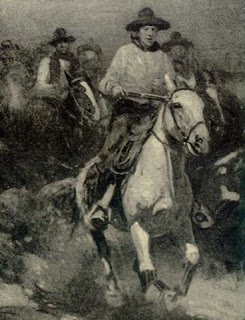Alice Huyler Ramsey, with three companions in tow, arrived in San Francisco, CA on August 7, 1909.
22 year-old Alice, accompanied by her two "forty something" sisters-in-law, and a 16 year-old friend was the first woman to drive across the United States.
It was originally meant as a publicity stunt for the Maxwell-Briscoe auto maker, but it turned into a step forward for women.
These four ladies left Hell's Gate in Manhattan on June 9, 1909 in a Maxwell 30, and set off on a 3,800 mile journey, of which only 152 miles were paved! The route they took would later be named the "Lincoln Highway."
Alice Ramsey was the only one of the four women that knew how to drive. Her husband had bought her a car the summer before, and she wasted no time in putting 6,000 miles on that car.
Over the course of the 59 days, the ladies learned how to change tires, clean spark plugs and to check the fuel level. They ran out of gas in the Midwest after forgetting to check the tank before they left one morning. To check the Maxwell's fuel level, you had to remove the front seat cushion, and insert ruler into the fuel tank.
The next day, their engine overheated and they didn't have any water with them. Nettie Powell and Margaret Atwood, Alice's sisters-in-law found the solution. They used their sterling silver and cut-glass toiletries holders to bring water, an ounce at a time, from road-side ditches to refill the radiator.
While traveling through Nebraska, the adventuresses were surrounded by a group of Native Americans with bows and arrows, but quickly found out they were just hunting rabbits.
In Wyoming they were stopped by men on horseback, who turned out to be a posse on the trail of a murderer.
During her driving career Alice Huyler Ramsey would make this cross-country trek more than 30 times. She was on her way to have driven all six passes of the Swiss Alps, when her doctors forced her to not drive the final pass because of her pacemaker. Alice died at the age of 96 on October 9, 1983.
Finally, on October 17, 2000, Alice was the first woman to be inducted into the Automobile Hall of Fame. It sure took them long enough!
A first-hand account of Alice's adventure, can be read in her book "Veil, Duster, and Tire Iron," which was published in 1961.
By 1909, only a handful of men had successfully completed the journey of driving a car across the county; the first time was only six years prior, in 1903, by Dr. Horatio Nelson.
As for the Maxwell-Briscoe company, it did not experience the longevity that Alice Huyler Ramsey enjoyed. The company was absorbed by Chrysler in 1926.















